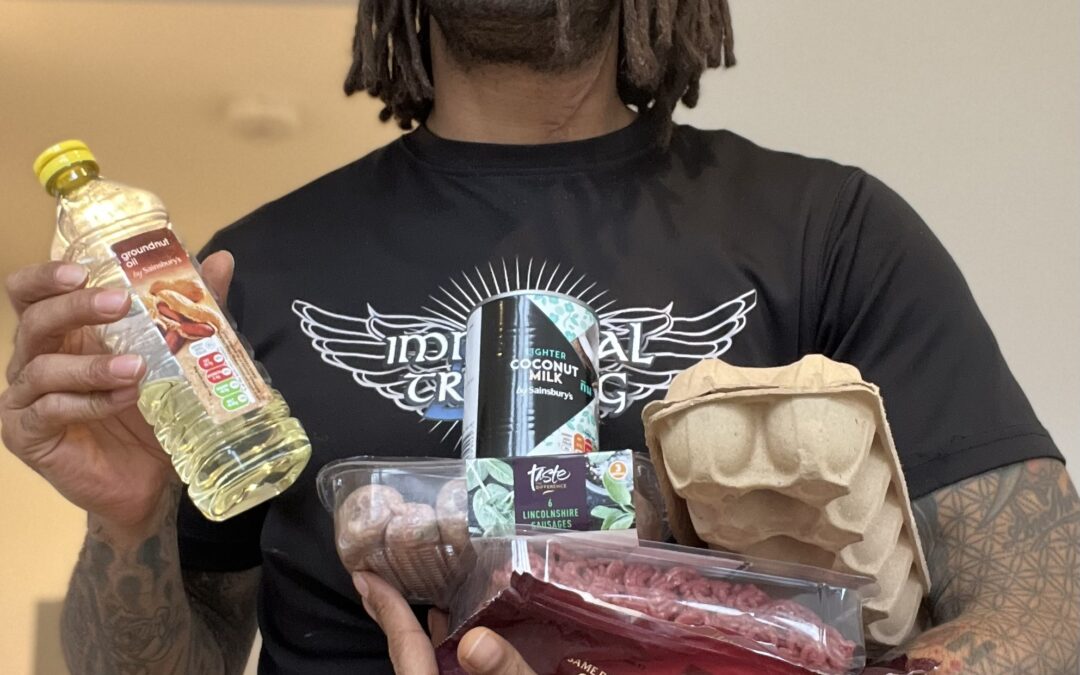
by Tay Gabbidon | Jan 10, 2022 | Blog, Nutrition, Uncategorized

If you want to trigger me, just say that saturated fat is unhealthy. I’m here to show you that it is not. In fact, including saturated fat in our diets is essential for maintaining an optimal biological state of well-being.
WHAT ARE THE BENEFITS OF SATURATED FAT?
Saturated fat is needed for:
- Mental development – the brain is made up of mostly saturated fat and cholesterol.
- Bone development – saturated fats metabolise calcium.
- Cardiovascular function – the lungs are coated with fatty acids that are saturated.
- The nervous system – as in the brain the nervous system is largely made up of saturated fats.
- Hormonal support – saturated fats are the building blocks to making hormones such as testosterone, oestrogen, cortisol, etc.
According to the independent study, A Critical Review of Cardio Disease by Dr Walter Willet from Harvard School of Public Health, we can see that saturated fat is not linked to heart disease and protects against strokes. Daily nut consumption is associated with a 35% decrease in the risk of heart attacks. Consuming full fat dairy is associated with a 60% reduction in risk of type 2 diabetes, lowers high density cholesterol, triglyceride levels and inflammation markers. People that eat egg yolks can reduce the chance of becoming diabetic by 42%. I highly recommend reading Dr Willett’s book, Eat, Drink and Be Healthy: The Harvard Medical School Guide to Healthy Eating if you want to gain more of an understanding of his research.
WHY IS SATURATED FAT SEEN AS UNHEALTHY?
You should never trust the science. Question it always. Lessons learned during the recent COVID pandemic have proven why this approach is most important. The same goes for the scientific understanding of saturated fat.
To understand the history, we must go back to the 1920s to spend time with Dr Charles Best & Dr Frederick Banting, two scientists who earned a Nobel Peace Prize for purifying insulin, making it available for pharmaceutical use. They also made some other interesting discoveries.
Drs Best & Banting were the first scientists to discover an accumulation of fat in and around the organs in diabetics. This discovery lead them to believe that dietary fat was the cause of type 2 diabetes. The development of the infamous food pyramid that was pushed onto the public was a direct result of this. It could be fair to say that certain powerful food corporations were able capitalise on these studies, but that’s a different conversation altogether!
Fortunately, technology has advanced a lot since the 1920s. The science that was missing from their research was the role of the liver. The liver plays a key role in fat metabolism. It is now known that the liver converts sugars into fat to be stored, either as subcutaneous – on the outside of the body – or visceral fat – in and around the organs. In fact, to put it quite simply, body fat is nothing more than stored sugar. Once there is no more room for it to be stored in the liver, the body is forced to store fat in the pancreas. When this happens, a person loses the ability to create insulin on their own. Welcome to type 2 diabetes.
Since the recommendation of ‘low fat’ diets by the bodies that govern food & drugs, we have noticed a 400%+ increase in heart disease, diabetes & obesity. Until the public is completely re-educated about nutrition this problem isn’t going to get better.
ARE THERE DIFFERENT TYPES OF SATURATED FATS?
Palmitic acid is often considered an unhealthy saturated fat because people often associate it with palm oil, but you will find that the acid (not the oil product) is already a part of our biological make up. Here are the different types of saturated fatty acids and their benefits:
- Caprylic acid – found in coconut oil, dairy, breast milk, nuts. Great for the immune system, acne, and is anti-viral.
- Lauric acid – found in coconut oil, breast milk. Needed for the immune system and is anti-viral.
- Palmitic acid – abundant in fish, nuts, seeds, animal products. 50% of cell membrane is made up palmitic acid.
- Butyric acid – found in butter and vegetable sources. This is the main fatty acid that feeds cells in the colon.
WHICH FATS SHOULD I AVOID?
We can put lipids (fats) into three categories – saturated, unsaturated and trans.
Unsaturated fats – EPAs & DHAs – are the omegas. These often get promoted as ‘healthy fats’, but you should now understand that saturated fat is just as important.
Trans fats increase the risk of heart disease and other health problems. They are found in hydrogenated foods. This is when a hydrogen atom is introduced to an oil to solidify it, preventing it from going rank. Margarine often disguised as ‘spreadable butter’ is a form of trans fat. Trans fats can also be found in fast food, microwave meals and other processed foods. We should avoid these fats at all costs.
The rule that I follow says, if you can dig it from the ground, pick it from a tree or plant, or slaughter it and it’s still in its unaltered state then it is OK to eat. The most important part of that statement is that it is still in its unaltered state. Meaning unrefined and unprocessed.
References:
Nutritional Epidemiology, Dr Walter Willet
Dr Charles Best & Dr Frederick Banting:
https://en.wikipedia.org/wiki/Frederick_Banting
Study comparing consumption of Saturated Fats vs Unsaturated Fats:
http://www.bmj.com/content/353/bmj.i1246 Astrup, A., Dyerberg, J., Elwood, P., Hermansen, K., Hu, F.B., Jakobsen, M.U., …Willett, W.C. (2011). The role of reducing intakes of saturated fat in the prevention of cardiovascular disease: Where does the evidence stand in 2010? [PDF]. Am J Clin Nutr, 93(4): 684–8. doi: 10.3945/ ajcn.110.004622
For help with own nutrition go here:
https://immortal-training.com/book-a-consultation/
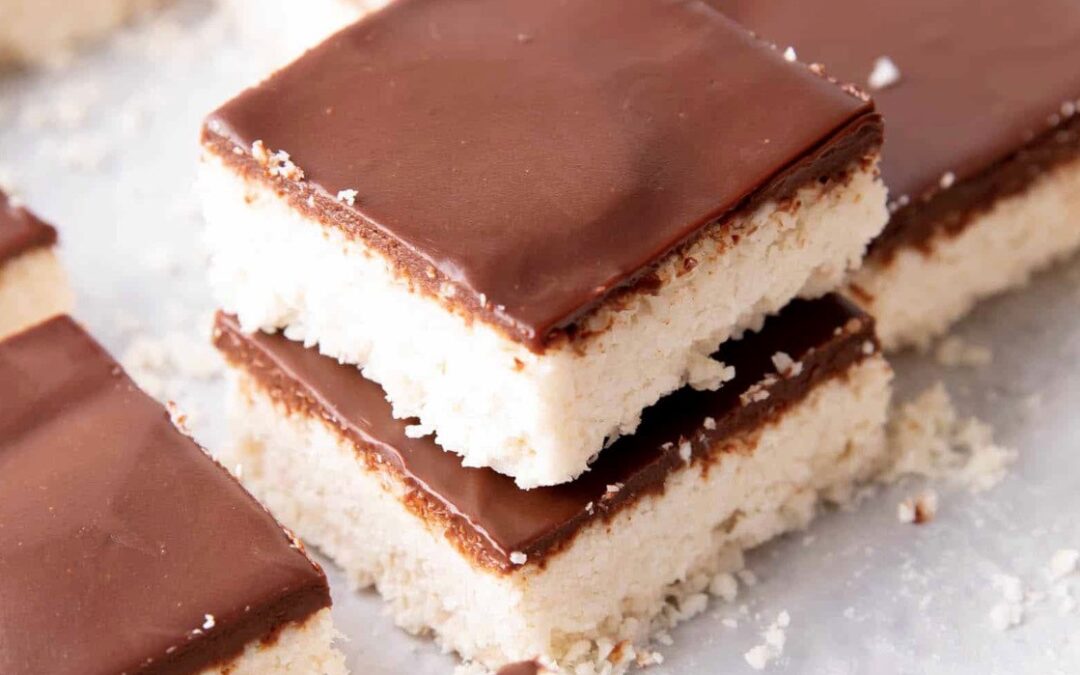
by Tay Gabbidon | Dec 21, 2021 | Blog, Nutrition, Recipes
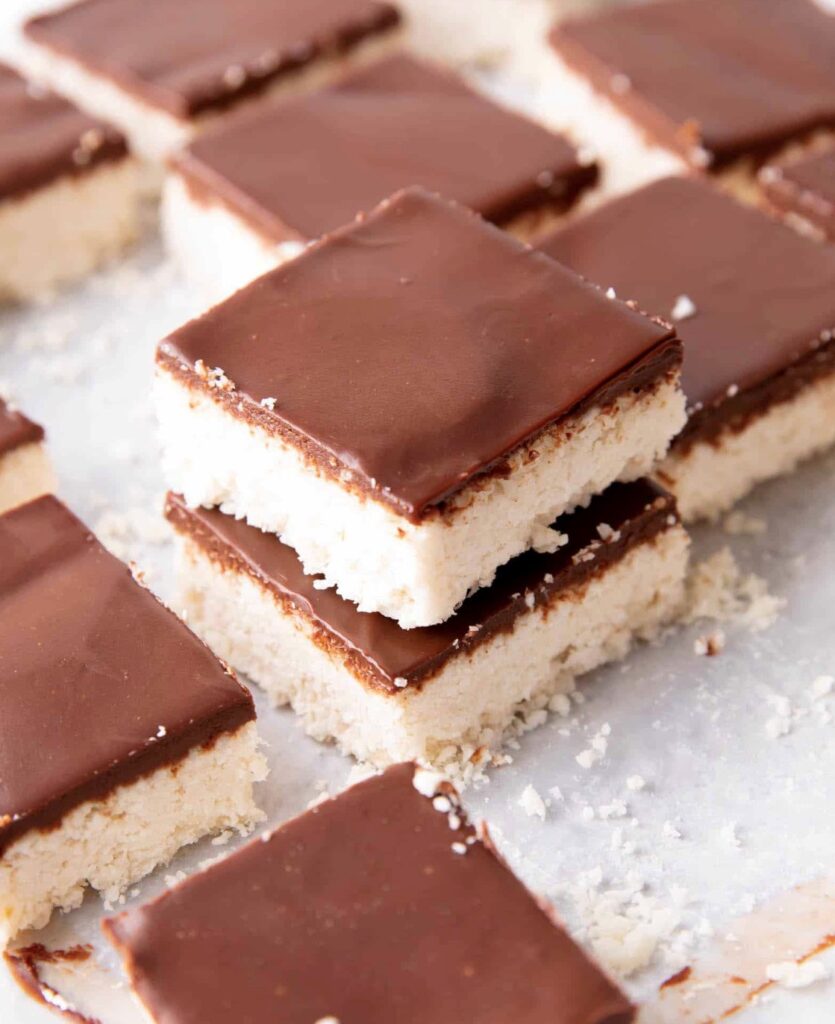
RAW CHOCOLATE KETO SHORTBREAD RECIPE
WHAT IS RAW CHOCOLATE KETO SHORTBREAD?
Raw Chocolate Keto Shortbread is a healthy dessert recipe that is ideal for obese and diabetic people who struggle to lose weight.
Prep Time: 15 mins
Cook Time: 1 hour
Servings: Serves: 8-10
INGREDIENTS
100g Ground Almonds (1 cup)
100g Dried Coconut / Desiccated Coconut (1
Cup)
2 TBSP Cashew Nut Butter (or alternative)
1 TBSP Sweetener
1 Pinch Salt
100g 85% chocolate
1 TBSP Coconut Oil
DIRECTIONS
In a food processor place ground almonds, dried coconut, cashew butter, sweetener and salt and blend until a bound consistency has formed (about 1-2 mins.
In a silicon mould or a greased dish press down the mixture to form a flat base. Place in the freezer for about 30 minutes until solid In a glass bowl over a pan of boiling water melt your chocolate and coconut oil together and stir until fully combined.
Now pour directly on to the shortbread base and place in freezer for about an hour until set.
Remove from the freezer and allow to stand for about 15-20 minutes before using a sharp knife to cut squares. Store inside a sealed container in the fridge.
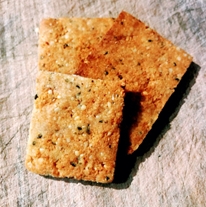
by Tay Gabbidon | Dec 21, 2021 | Blog, Nutrition, Recipes
 What Are Keto Crackers?
What Are Keto Crackers?
Keto crackers are carb-free crackers that are great tasting and ideal for diabetics and people that want to lose weight in the form of body fat.
Prep Time: 10 minutes
Cook Time: 20 minutes
Servings: Servings 36
INGREDIENTS
1 cup almond flour
1/2 cup hemp hearts
1/2 cup coconut flour plus extra for rolling the
dough
3 teaspoons baking powder
1 teaspoon xanthan gum
1/4 teaspoon baking soda
1/2 teaspoon salt for topping
6 tablespoons cold salted butter – very cold
4 tablespoons salted butter melted
2 tablespoons olive oil
2/3 cup ice water
DIRECTIONS
Preheat oven to 205°C.
Put the almond flour, hemp hearts, coconut flour, baking powder, baking soda, and salt in a bowl. Grate the chilled butter, stirring it into the flours. Stir gently with a big spoon to ensure the butter is coated with flour and you can see butter shreds throughout your coconut flour mixture. Add the olive oil and stir gently to combine, then add the water. Let the mixture stand in the refrigerator for at
least 30 minutes.
Dust a sheet of parchment with coconut flour. Roll the chilled dough between sheets of baking parchment until it is about ¼ -inch thick. Cut the dough in the desired shapes. Bake the crackers on the bottom parchment sheet for 15-20 minutes or until golden brown. Add 1/2 teaspoon of salt to melted butter and brush the crackers while they are hot.
Turn oven off and place back in the oven for 5 minutes. Let cool.
by Tay Gabbidon | Jan 27, 2020 | Blog, Nutrition, Science

WHAT IS KETOSIS?
Ketosis is the metabolic state in which one produces elevated levels of ketone bodies. Ketones are produced by the liver from fats stores during times of fasting, in this case from sugars and carbohydrates.
The human body can use two things for energy – glucose (sugar) and ketones. When you are in ketosis the body is forced to use stored fat as fuel by way of ketones.
SHOULD I CUT MY CALORIES?
If you get your information from food companies, or institutions like Slimming World, or Weight Watchers, then you will end up in a vicious cycle of calorie cutting in order to lose a few pounds. Sadly, the vast majority of people on these programs will never get to where they want to be. The only result is less muscle and bone mass and a higher body fat percentage. Restricting calories can help you lose weight, but won’t necessarily help you lose body fat.
Calories are nothing more than a unit of measurement used to determine the amount of energy we get from food – simple as that. If you have 500kcal worth of broccoli in one hand and 500kcal worth of chocolate in the other, which one is going to make you fat? The chocolate will because it’s loaded with sugar. This makes common sense out of the fact that not all calories are equal. Yet companies like Nestle and Cadbury’s will advertise sweets and chocolate bars that are only 100kcal claiming they’re healthy. Wow! Talk about capitalizing on peoples’ ignorance.
SO SUGAR AND CARBS ARE THE ENEMY?
Calories equal energy. We can only get calories from macronutrients – protein, carbohydrates and fats. Carbohydrates and sugars are one in the same. Carbs are, in fact, just complex chains of sugar molecules. This is why refined carbs, such as rice, pasta and bread, raise blood-sugar levels higher than any other food.
The body’s response to elevated blood-sugar levels is insulin. Once released from the pancreas, insulin takes the sugar from the blood to the liver where it is converted into glucose and pushed into the cells. Remember that the body can use either sugar (in the form of glucose), or ketones for fuel. Once in the liver, the sugar gets converted into glycogen – stored sugar – and then into fat.
That’s how we get fat.
The liver can also convert amino acids from proteins into fat, but this typically only happens if you have too much in one sitting, or when simultaneously getting an insulin spike from carbohydrates.
SHOULD I AVOID FAT?
Unlike protein and carbohydrates dietary fats do not pass through the liver. Instead they get absorbed directly into the lymphatic system as chylomicrons. (Remember, the liver controls body fat storage). It is possible to store dietary fats as body fat, but again, mainly when combined with sugar or carbs resulting in an insulin response. With that understanding it should be clear that a low fat/high carb diet is not the way to go about losing body fat. Rather that is should be the other way round – high fat/low carbs.
The original research into diabetes that took place in the 1920s by Fredrick Banting and Charles Best gave scientists the understanding that the disease was caused by excessive fat storage in the liver and pancreas. Understandably, dietary fat became the culprit. Hence the implementation of the low fat/high carb diet and the infamous food pyramid on the mass population. Not soon after came more than a 400% increase in cases of type 2 diabetes due to the fact that doctors treated the disease with more of the same diet that actually caused it in the first place! What a mess.
But a lot has changed since then. Technology has advanced, so we now know that it is the liver that converts things into body fat. Finally, we have the tools necessary to beat obesity and type 2 diabetes.
WHAT FATS SHOULD I AVOID?
Dietary fats can be saturated, monounsaturated, polyunsaturated, or trans. Our bodies need all of them excluding the last. Trans fats are a by-product of hydrogenation, which is when hydrogen is used to solidify oils and prevent them from going rotten. They are found in things such as margarine, microwave dinners, fast food, palm oil, etc. They are unnatural and should be avoided at all costs.
Saturated and unsaturated fats should be a part of everyone’s diet. Yes, I said saturated fats as well! The sad reality is that if you google search “is saturated fat healthy?” you will get a couple pages in before you find anything that doesn’t vilify this key nutrient. I can tell you first hand that saturated fat plays an important role in the reversal of type 2 diabetes, in which I have helped countless clients achieve over the years. The research and publications of The Weston A. Price Foundation and many others consistently confirm that chronic diseases have increased dramatically over the past forty years. This is a direct result of the dietary guidelines given to the public – telling them to restrict animal fats and replace them with grains and sugars.
Saturated fats are needed for brain, cardiovascular, bone, immune and nervous system health, so a deficiency can cause problems in more place than one.
WILL FRUIT HELP ME LOSE WEIGHT?
Fruit contains the sweetest natural sugar in the world – fructose. Earlier I mentioned that the cells can use glucose for energy. All sugars (dextrose, lactose, maltose, etc.) can be converted into glucose in the liver to be used as energy except for fructose. Instead fructose gets stored as glycogen and then body fat. Continuous high levels of fructose can quickly lead to type II diabetes. From the 1970s-present day food companies add High Fructose Corn Syrup and Glucose-Fructose-Syrup to just about every sugary drink and most sweets on the market. This has also contributed to the 400%+ increase in Type II Diabetes over the past few decades.
If you’re looking to get into ketosis then you should avoid fruit. However berries have only trace amounts of fructose and will not cause a spike in insulin levels.
HOW WILL I KNOW I AM IN KETOSIS?
Sugar is highly addictive, so expect to experience some withdrawal symptoms and subtle changes from your body switching energy sources. The transition can take up to 48 hours, but once you get through that threshold your energy, mood, sleep, hair, skin, nails – everything should improve. Here’s what to look for:
- Weight loss
- Obviously, you’re in a fat burning state.
- Bad breath
- A faint smell similar to methane can be caused by higher levels of ketones in the first 48 hours
- Loss of appetite
- Protein and veg digest slower than carbs and ketones could suppress appetite in the brain
- Increased focus
- Ketones can improve brain clarity and brain function
- Temporary lethargy
- Switching from glucose to ketones as your main source of fuel might take a couple of days
- Digestive issues
- Diets based on ketosis often involve major changes in food, so detoxification of the digestive system can cause some constipation, or diarrhea
- Be sure to consume vegetables high in fibre
- Insomnia
- Ketosis can also sleeping problems for up to a couple of weeks, but once adapted, quality of sleep is normally improved
CONCLUSION
Diets built around ketosis are the most effective for losing body fat. The keto diet is not a calorie counting, or cutting diet, but it would be wise to avoid eating too many calories in one sitting (as previously mentioned). Good news is that you don’t have to obsess over calories.
Be sure to set reasonable goals. Give yourself a day off at least once per week. It will help psychologically more than anything.
With that being said, bon voyage and good luck!
Tayvis Gabbidon
For help with your diet book a consultation here:
https://immortal-training.com/book-a-consultation/
References:
https://www.healthline.com/nutrition/10-signs-and-symptoms-of-ketosis#section11
https://www.westonaprice.org/health-topics/know-your-fats/good-fats-bad-fats-separating-fact-from-fiction/
https://urbanremedy.com/fats-real-skinny-healthy-fats-harmful-fats/
https://www.dietdoctor.com/authors/dr-jason-fung-m-d
Book of reference:
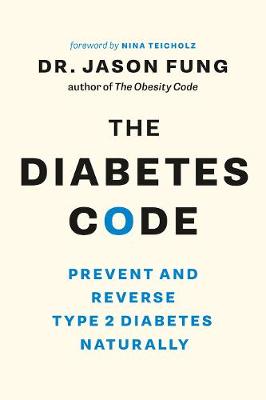


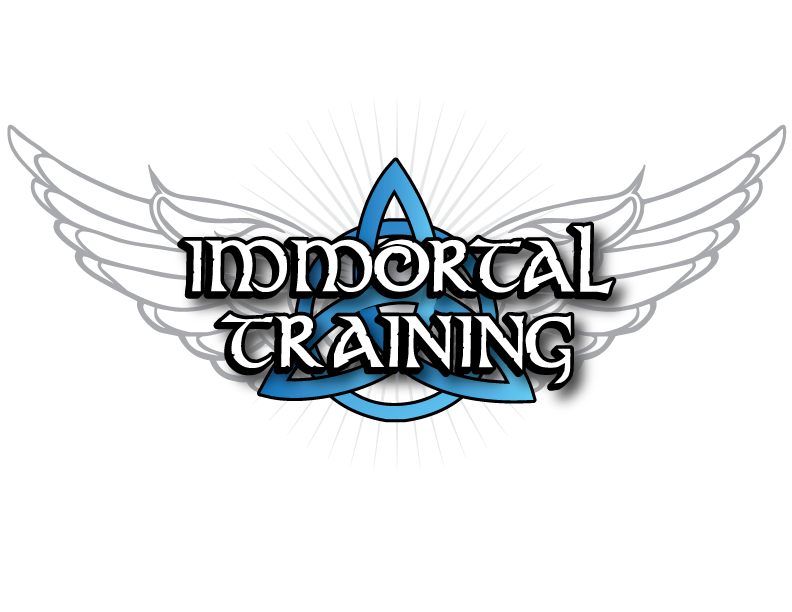





Recent Comments